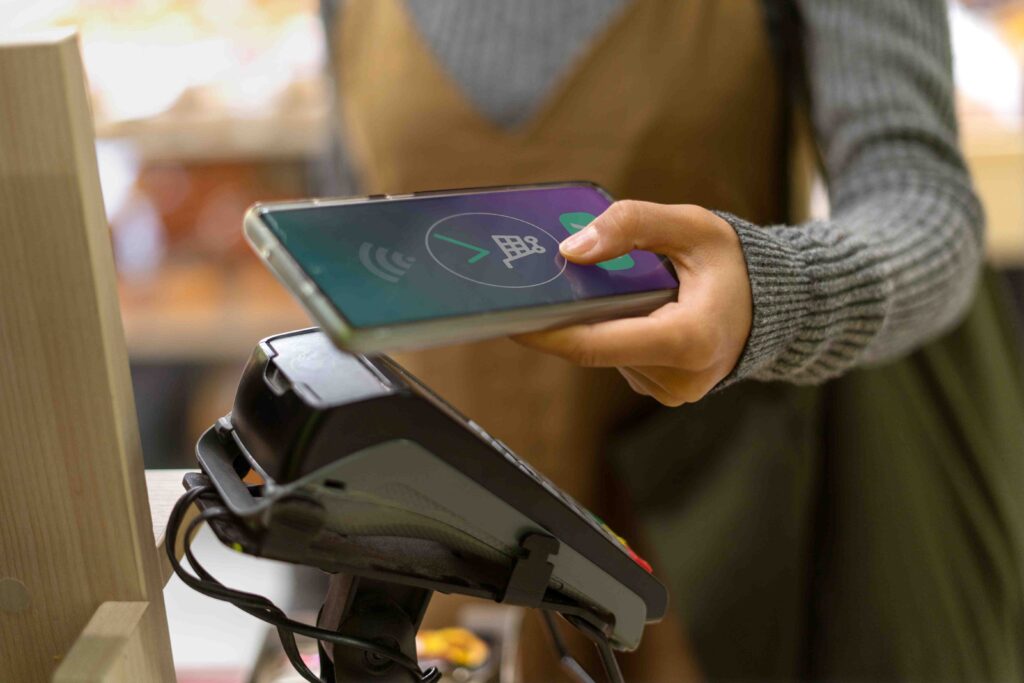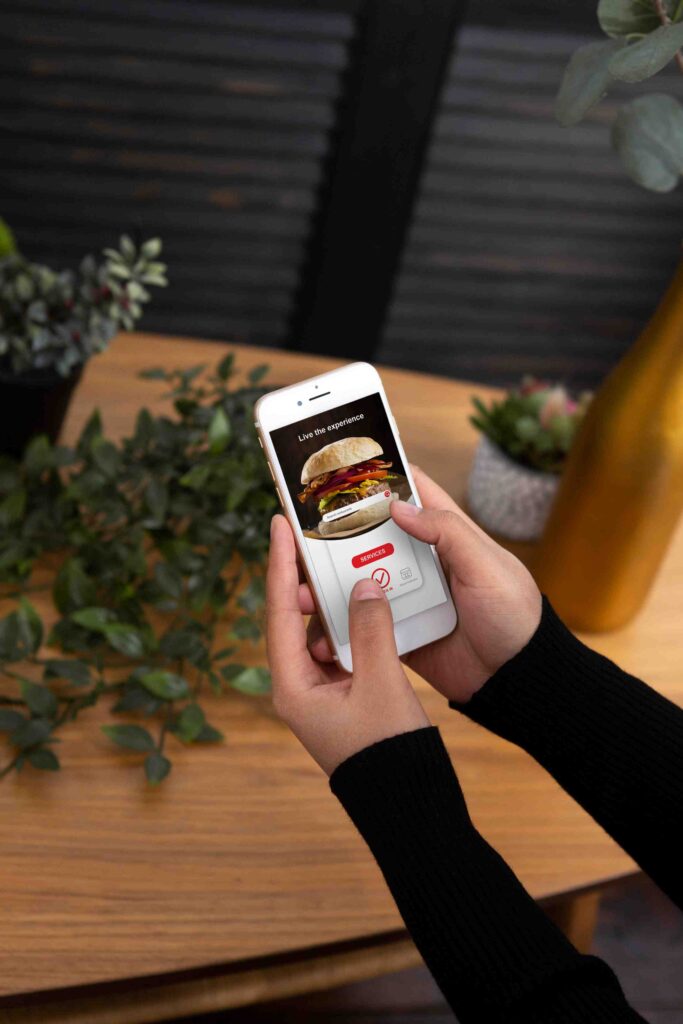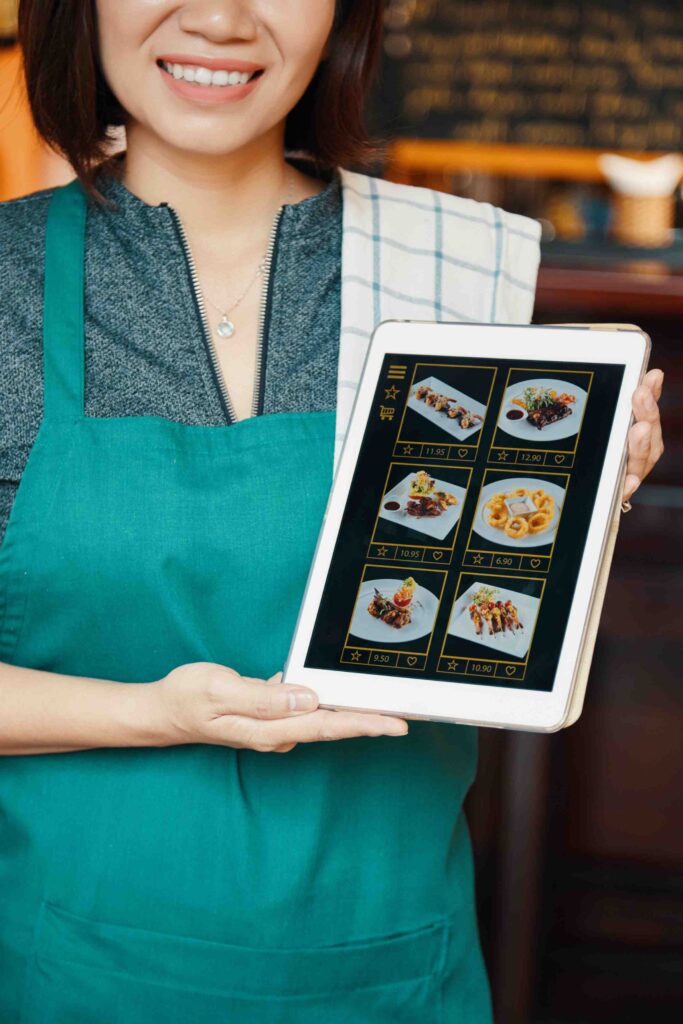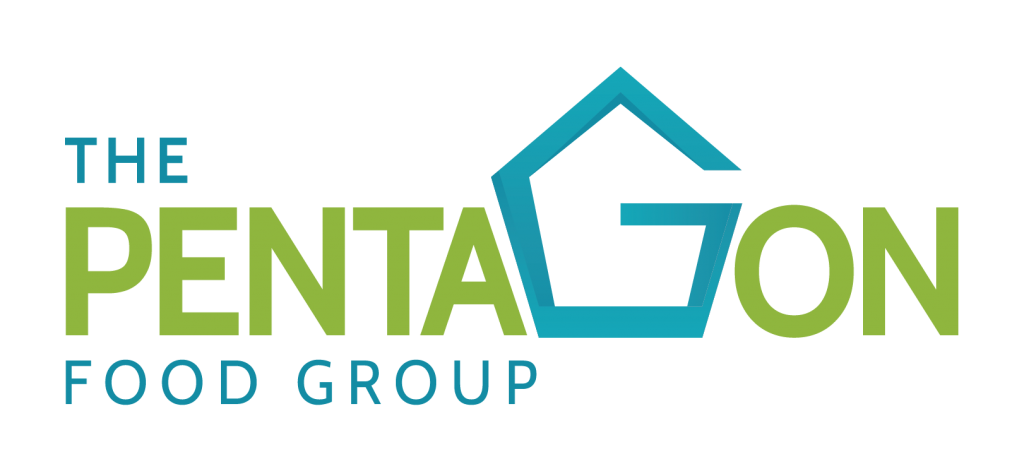Technology has become a cornerstone of the modern restaurant industry, driving significant changes in how businesses operate and serve their customers. Restaurant technology solutions are transforming operations by automating tasks, improving efficiency, and enhancing the overall customer experience. From online ordering systems to AI-powered analytics, these tools are helping restaurants streamline processes and reduce costs. The post-pandemic era has accelerated the adoption of technology, with many establishments leveraging it to stay competitive in a rapidly evolving market.
75% of restaurant operators say that technology gives them a competitive edge (National Restaurant Association, 2024). As customer expectations continue to rise, embracing the latest types of technology used in a restaurant is no longer optional it’s essential for success.
Fast Facts on Restaurant Technology Trends
- A survey by Square indicates that 85% of UK restaurant leaders plan to invest in technology, such as new AI and automation tools, to improve their operations this year. squareup.com
- The same survey reveals that 74% of restaurant leaders are open to adopting automation if it enhances the customer experience. squareup.com.
- UK restaurant leaders believe AI and automation can improve various aspects of their business, including staff marketing and promotions (77%), inventory management (77%), payments (76%), and menu optimization (76%). squareup.com.
- According to a report by Statista, 70% of UK consumers expect digital interactions with restaurants to become more important than in-person experiences by 2025. Additionally, 68% of UK diners prefer brands that offer seamless online ordering and personalized digital experiences.
Statista – UK Restaurant Technology Trends 2025 - A survey by UK Hospitality reveals that 72% of restaurants in the UK plan to invest in QR code technology for menus, ordering, and payment systems by 2025, driven by consumer demand for convenience and hygiene.
UK Hospitality – QR Code Adoption Report 2025. - The same survey by UK Hospitality indicates that 80% of restaurant operators in the UK intend to adopt new technologies within the next year, with fine-dining establishments leading the way at 90%. UK Hospitality – Technology Adoption in Restaurants 2025.
Top Restaurant Technology
- Point of Sale (POS) Systems & Touchscreen Terminals

Modern POS systems are essential for restaurant operations, handling order processing, payments, and transaction management. A well-integrated POS system streamlines operations, reduces errors, and enhances customer service.
Key Benefits:
- Faster Transactions – Swift payment processing speeds up service and reduces wait times.
- Inventory Management – Real-time stock updates help track inventory levels and prevent shortages.
- Detailed Reporting – Generates sales insights for better business decisions.
- User-Friendly Interface – Touchscreen terminals simplify order-taking, making it easier for staff to use.
- Seamless Payments – Accepts card and mobile payments through a built-in reader for smooth checkouts.
Implementing a modern POS system improves efficiency, enhances the customer experience, and increases sales.
- Contactless Payments

Contactless Payment Systems offer a fast, secure, and convenient way for customers to pay without physical contact, enhancing safety and efficiency.
Key Benefits:
- Fast & Secure Transactions – Speeds up payments while ensuring data protection.
- Enhanced Safety – Minimises physical contact, reducing health risks.
- Convenient for Customers – Supports Apple Pay, Google Wallet, and PayPal.
- Increased Customer Satisfaction – Meets modern expectations for seamless payments.
- Boosts Operational Efficiency – Reduces queues and improves service speed.
Implementing contactless payment systems keeps your restaurant up to date with industry trends and enhances the customer experience.
- Online Ordering and Delivery Platforms

In the age of convenience, online ordering and delivery platforms are essential for restaurant success. These platforms benefit both customers and restaurant operations by streamlining procurement and inventory management.
Key Benefits:
- Enhanced Customer Convenience – Customers can easily place orders online for pickup or delivery.
- Efficient Procurement – Restaurants can order ingredients and supplies seamlessly from suppliers.
- Accurate Order Management – Reduces errors and delays by automating the ordering process.
- Real-Time Inventory Tracking – Helps monitor stock levels and prevents shortages.
- Cost Savings – Optimised stock management reduces waste and administrative workload.
Integrating online ordering and delivery platforms enhances efficiency, improves customer satisfaction, and supports smoother restaurant operations.
- Table Ordering
Many restaurants now use QR code menus, allowing customers to order and pay directly from their tables using their smartphones.
As a restaurant owner, you can set up QR codes on tables, making ordering quick and hassle-free without waiting for staff.
Key Benefits:
- Faster service with reduced wait times
- Convenient ordering and seamless payments
- Increased sales as customer order more easily
Implementing QR code table ordering enhances efficiency, improves customer experience, and boosts revenue.
- Reservation Management Systems
Reservation management systems help restaurants optimise table assignments and manage guest bookings efficiently. These tools reduce wait times and maximise seating capacity while improving the customer experience.
Key Benefits:
- Optimised Table Management – Ensures efficient seating arrangements to accommodate more guests.
- Online Booking Convenience – Customers can reserve tables easily through digital platforms.
- Automated Reminders – Reduces no-shows by sending timely booking confirmations and reminders.
- Real-Time Availability Updates – Keeps staff and customers informed about open tables.
- Improved Operational Efficiency – Streamlines guest flow and enhances overall restaurant management.
Implementing a reservation management system helps restaurants operate smoothly, increase bookings, and improve customer satisfaction.
- Digital Menu Boards

Digital menu boards have transformed how restaurants display their menus, providing a dynamic and visually engaging way to showcase offerings and promotions.
Key Benefits:
- Easy Updates – Menus can be updated in real-time for seasonal changes and new promotions.
- Enhanced Visual Appeal – High-resolution images and videos make menu items more enticing.
- Increased Customer Engagement – Eye-catching displays attract attention and boost sales.
- Flexible Pricing Strategies – Allows for quick price adjustments and special offers.
- Cost-Effective Solution – Reduces the need for printed menus and frequent replacements.
Implementing digital menu boards enhances the dining experience, improves operational efficiency, and drives sales.
- Kitchen Display Systems (KDS)
Kitchen Display Systems (KDS) improve kitchen efficiency by replacing traditional paper tickets with digital screens for better order management.
Key Benefits:
- Enhanced Order Accuracy – Reduces mistakes by displaying clear, real-time order details.
- Improved Kitchen Workflow – Organises orders by priority, ensuring smooth operations.
- Faster Preparation Times – Streamlines communication between front-of-house and kitchen staff.
- Real-Time Order Tracking – Helps monitor preparation times and maintain service standards.
- Reduced Paper Waste – Eliminates the need for printed tickets, promoting eco-friendly operations.
Implementing KDS enhances efficiency, improves order accuracy, and ensures a seamless kitchen workflow.
- Customer Relationship Management (CRM) Software

CRM software helps restaurants manage customer data to enhance service and marketing strategies.
Key Benefits:
- Personalised Marketing – Uses customer preferences to create targeted promotions.
- Enhanced Customer Loyalty – Offers customised experiences to boost retention.
- Data-Driven Insights – Tracks customer behaviour to refine marketing strategies.
- Improved Service Quality – Stores past orders and feedback for better customer interactions.
- Efficient Customer Management – Organises customer information for seamless engagement.
Implementing a CRM system helps restaurants build stronger relationships, improve customer satisfaction, and drive repeat business.
- Inventory Management Systems
Effective inventory management systems help restaurants control costs and minimise waste by automating stock tracking.
Key Benefits:
- Real-Time Stock Updates – Ensures accurate inventory levels and prevents shortages.
- Reduced Waste – Helps avoid overstocking and spoilage, cutting unnecessary costs.
- Automated Reordering Alerts – Notifies staff when stock runs low for timely replenishment.
- Improved Supply Chain Management – Streamlines ordering processes with suppliers.
- Data-Driven Decision Making – Provides analytics for better resource allocation and cost control.
Implementing an inventory management system enhances efficiency, reduces waste, and optimises restaurant operations.
- Employee Scheduling Software
Employee Scheduling Software improves workforce management by simplifying shift planning, time-off requests, and staffing adjustments.
Key Benefits:
- Efficient Shift Planning – Automates scheduling to ensure adequate staff coverage.
- Reduced Scheduling Conflicts – Minimises errors and prevents double bookings.
- Optimised Labour Costs – Predicts peak hours and adjusts staffing accordingly.
- Improved Communication – Keeps staff informed with real-time updates on schedules.
- Enhanced Employee Satisfaction – Provides flexibility and better work-life balance.
Implementing employee scheduling software boosts productivity, reduces conflicts, and ensures smooth restaurant operations.
- Mobile Payment Solutions

Mobile Payment Solutions enhance transaction speed and security by allowing customers to pay using their smartphones or mobile devices.
Key Benefits:
- Faster Transactions – Reduces wait times with quick and seamless payments.
- Enhanced Security – Uses encryption and tokenisation to protect customer data.
- Convenient & Contactless – Provides a hassle-free, cashless payment option.
- Increased Sales Potential – Encourages impulse purchases with easy payments.
- Better Customer Experience – Offers a modern and efficient checkout process.
Integrating mobile payment solutions improves service efficiency, security, and customer satisfaction.
- Automated Customer Service
AI-Powered Chatbots are transforming restaurant service by automating order-taking, answering queries, and promoting deals without staff involvement.
Key Benefits:
- Efficient Order Management – Handles orders quickly and accurately.
- 24/7 Customer Support – Answers common queries anytime, improving service.
- Reduced Workload – Frees up staff to focus on in-person service.
- Personalised Customer Experience – Uses AI to tailor responses and recommendations.
- Boosts Business Growth – Enhances efficiency, even during staff shortages.
Integrating AI chatbots streamlines operations, enhances customer satisfaction, and supports business expansion.
- Feedback and Review Management Tools

Review & Feedback Management tools help restaurants maintain a strong reputation by monitoring and responding to online reviews.
Key Benefits:
- Real-Time Review Monitoring – Tracks customer feedback across multiple platforms.
- Improved Customer Engagement – Allows quick responses to concerns and praises.
- Enhanced Reputation Management – Showcases positive reviews to build trust.
- Actionable Business Insights – Identifies trends to refine service and operations.
- Stronger Customer Loyalty – Shows commitment to customer satisfaction.
Implementing review management tools helps restaurants improve service, strengthen their reputation, and boost customer loyalty.
Conclusion
In today’s competitive restaurant industry, embracing the latest restaurant technology solutions is no longer optional it’s essential. From restaurant ordering technology that streamlines the customer experience to advanced types of technology used in a restaurant like AI-powered analytics and contactless payment systems, these tools are transforming how restaurants operate. By adopting these innovations, you can improve efficiency, reduce costs, and deliver exceptional service that keeps customers coming back. Whether you’re a small café or a large chain, investing in the right technology ensures you stay ahead of the curve. Ready to revolutionise your restaurant? Explore the best restaurant technology solutions today and take your business to the next level.
FAQs:
1. What is restaurant technology?
Restaurant technology includes technical & digital tools like POS systems, online ordering, self-service kiosks, and contactless payments that help streamline operations and improve customer service.
2. Why is a POS system important for restaurants?
A POS system speeds up ordering, manages payments, and tracks sales, helping restaurants operate efficiently.
3. How does online ordering benefit restaurants?
Online ordering boosts sales, reduces wait times, and allows customers to order from anywhere, making service more convenient.
4. What are self-service kiosks?
Self-service kiosks let customers place orders and pay without waiting for staff, improving speed and accuracy.
5. How do QR code menus work?
QR code menus allow diners to scan, browse, and order directly from their smartphones, reducing wait times and improving convenience.
6. Why are contactless payments useful?
Contactless payments speed up transactions, enhance hygiene, and offer a seamless checkout experience for customers.
7. How can AI-powered chatbots help restaurants?
AI chatbots can take orders, answer customer questions, and suggest promotions, reducing staff workload and improving service.






